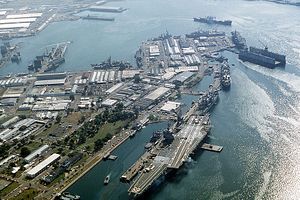A Japanese submarine is set to visit the Philippines for the first time in 15 years along with two warships that will then sail onto Vietnam amid South China Sea tensions, Reuters reported Monday.
The report cited sources as saying that the Japanese submarine, which is used for training, and the destroyers will arrive in the Philippines in April, with the escort vessels later sailing on to Vietnam’s Cam Ranh Bay base.
“It sends a message. It is important for Japan to show its presence,” the source, which declined to be identified, reportedly said Monday. Philippine military spokesman Brigadier-General Restituto Padilla also said that the Southeast Asian state was informally aware that a Japanese submarine is set to visit Subic Bay in April.
While the move may appear to be a new development, it has in fact been in the works for a while as Japan has sought to boost defense ties with both Manila and Hanoi, the two more forward-leaning Southeast Asian claimant states in the South China Sea disputes, amid China’s growing assertiveness there.
In the case of the Philippines, in August last year, the Japan Maritime Self Defense Forces (MSDF) participated in a humanitarian drill with the United States and the Philippines off of Subic Bay in a key development (See: “Interview: The Future of U.S. Military Exercises in the Asia-Pacific”). Japan and the Philippines held their first drills just last year, and plans are also in the works for potential transfers of defense equipment and technology and, further out, even potential Japanese access to Philippine bases through a visiting forces agreement (See: “Japan, Philippines Hold First South China Sea Naval Exercises”). Updates on more immediate items are expected when Japan’s defense minister, Gen Nakatani, visits Manila later this year (See: “Japan’s Defense Minister to Visit Philippines to Boost Security Ties”).
And in the case of Vietnam, last November, Nakatani and his Vietnamese counterpart Phung Quang Thanh had already agreed during a meeting in Hanoi last November that Japanese vessels would be allowed to make port calls in Cam Ranh Bay, a deep-water harbor in central Vietnam alongside the South China Sea (See: “Japan Warships Could Visit Vietnam Naval Base Near South China Sea in 2016”).
More generally, there were also indications earlier this year that Tokyo would seek to boost its presence in the South China Sea in 2016, with both vessels as well as patrol aircraft, which would include making transits to the Philippines and Vietnam (See: “Japan Eyes Bigger South China Sea Presence in 2016”).

































